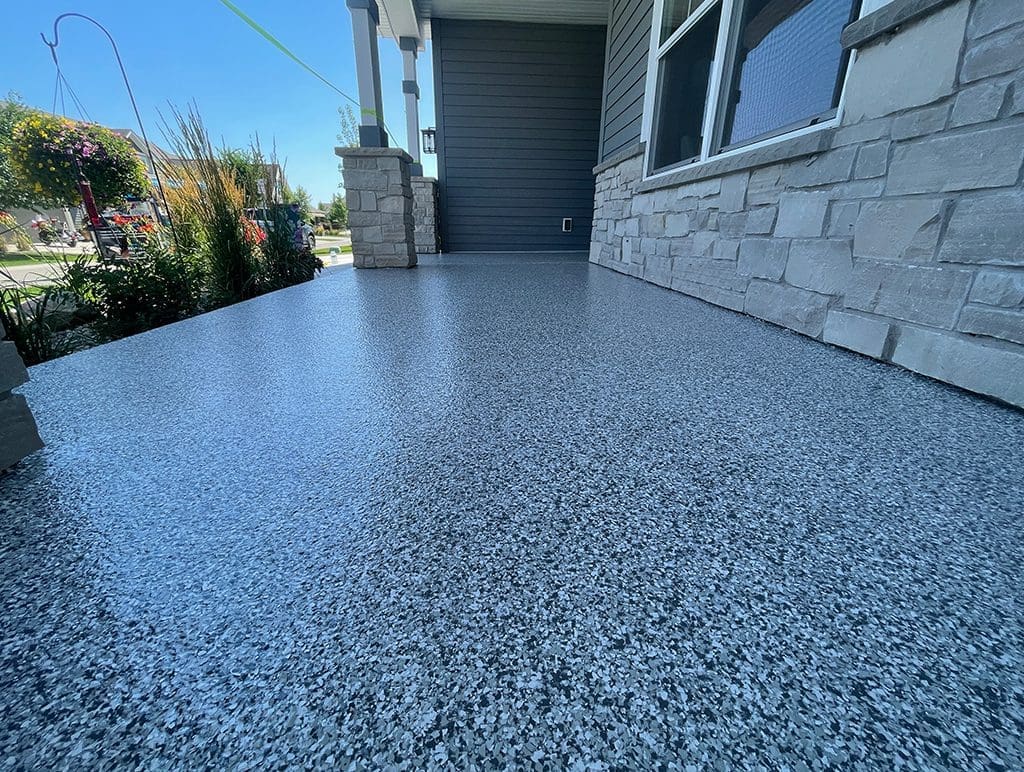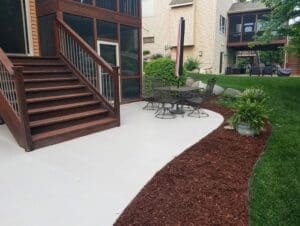Introduction: Embracing Change in Patio Flooring Solutions
If you’re considering upgrading your patio flooring, you’re likely weighing the benefits of traditional options against innovative materials like polyurea coatings. Patios today must endure heavy foot traffic, harsh weather, and occasional chemical exposure, so durability and resistance are key factors in your choice. Traditional patio flooring—such as concrete or stone—has been trusted for years due to its longevity and familiarity.
However, polyurea concrete coatings have surged in popularity by offering rapid curing times, exceptional chemical resistance, and impressive durability that can withstand the demands of both indoor and outdoor spaces. Understanding the pros and cons of patio polyurea versus established flooring options can help you make an informed decision that balances aesthetics, performance, cost, and maintenance for your home’s outdoor living area.
The Rise of Polyurea for Patio Flooring
Durability and Longevity
Polyurea coatings have established themselves as a leading choice for patio flooring due to their exceptional durability and long lifespan. Unlike traditional coatings, polyurea is flexible enough to move with the concrete, preventing cracking and peeling even in extreme weather conditions.
Many polyurea concrete coatings have been known to last 15 to 25 years or more, maintaining their protective qualities without fading or discoloration thanks to their excellent UV resistance. This makes polyurea ideal for patios that face heavy foot traffic, chemical exposure, and variable outdoor elements.
Fast Cure Time and Immediate Usability
One of the standout benefits of polyurea floor coatings is their rapid curing time. Unlike epoxy or other traditional options that can take days to fully cure, polyurea can be ready for use within hours. This means you can enjoy your patio space almost immediately after the job is complete, minimizing downtime and inconvenience.
This rapid turnaround is particularly appealing for homeowners who want durable patio solutions without long waits or disruptions to their outdoor activities.
Eco-Friendly and Customizable Options
Polyurea coatings are also gaining popularity because they offer customizable finishes and colors while being more environmentally friendly than some traditional coatings. Many polyurea polyaspartic blends feature low volatile organic compounds (VOCs), reducing harmful emissions during and after application.
Plus, the ability to customize textures and colors lets you create a patio floor that complements your home’s style while ensuring it resists stains, chemicals, and heavy foot traffic. This combination of ecological consideration and design flexibility makes polyurea an appealing modern alternative.
Traditional Patio Flooring: Time-Tested Options
Variety and Natural Aesthetics
Traditional patio flooring offers a rich array of materials that bring natural beauty and distinctive textures to your outdoor space. Options include concrete pavers, burnt bricks, wood decking, quarry tiles, flagstones, and natural stone like granite or limestone. Each of these choices lends a unique aesthetic that complements different landscaping and architectural styles—from the rustic charm of wood rounds to the timeless elegance of natural stone.
This variety allows you to tailor your patio’s appearance to your personal taste, creating a space that feels warm and inviting.
Temperature and Slip Resistance
Many traditional flooring materials, especially concrete and brick pavers, provide good slip resistance, making them safer for patios, decks, and poolside areas. For example, concrete’s rough textures and options like exposed aggregate or wire-brushed finishes enhance traction, reducing slip hazards when wet. Additionally, natural materials often manage temperature better in outdoor settings—concrete pavers and quarry tiles typically stay relatively cool under moderate shade, providing comfort on sunny days.
Such features are especially important in high-traffic patio spaces where safety and comfort are priorities.
Cost-Effective Initial Investment
Traditional patio flooring options generally offer a lower upfront cost compared to advanced coatings like polyurea. Materials like poured concrete, brick pavers, or gravel are often more budget-friendly to install, especially for larger areas. While some natural stones such as granite or flagstone can be pricier, many homeowners find that the initial investment for materials combined with straightforward installation methods keeps traditional flooring an accessible choice.
However, maintenance needs—such as sealing to prevent staining or periodic repairs—should be factored in for a realistic long-term cost evaluation.
Conclusion: Choosing the Right Flooring for Your Patio
Whether you’re upgrading your garage, revamping a patio, or transforming a commercial floor, Volt Coatings MN delivers concrete coating solutions that stand up to life—and look great doing it. With three generations of concrete expertise combined with award-winning application techniques, Volt Coatings provides floors that balance unbeatable durability with stunning aesthetics.
From impact-resistant garage floors to weather-tough patio coatings, they help homeowners and businesses enhance how they live, work, and play. Request your free quote today and discover why so many Minnesotans trust Volt Coatings for results that last.
FAQ
What are the disadvantages of polyurea flooring?
Polyurea flooring disadvantages include poor UV stability causing yellowing and degradation if unprotected outdoors, higher cost than traditional coatings, sensitivity to temperature and moisture during application, potential strong odor, and installation challenges requiring professional skill for best results .
Is polyurea worth the money?
Polyurea is worth the money despite a 20-30% higher initial cost compared to traditional coatings due to its exceptional durability, flexibility, fast curing, and chemical resistance. It requires less maintenance and lasts longer, offering cost savings over time, especially with professional application for optimal performance.
What is the life expectancy of polyurea coating?
Polyurea coating typically lasts 15 to 40+ years depending on installation quality and conditions. On average, it can last 10 to 20 years with some lasting over 30 years with proper maintenance. It outperforms epoxy coatings, offering superior flexibility, chemical resistance, and UV stability, often backed by lifetime warranties .
Can polyurea be used outdoors?
Polyurea is suitable for outdoor use due to its exceptional durability, UV resistance, and flexibility. It resists fading, cracking, and chipping under sun exposure and extreme weather.
Polyurea coatings are ideal for patios, pool decks, and outdoor concrete, providing long-lasting protection and slip resistance .



